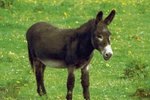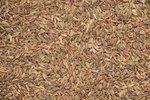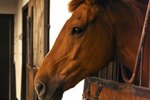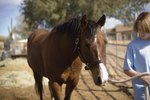Wide open spaces and a blanket of grass is what horses prefer to have around them. Though often associated with stables for living space and oats for food, horses prefer a very specific type of environment based on how they evolved.
Evolution

The ancestors of the modern horses once were much smaller animals that lived in forests and that later had to adapt to the change that occurred seven to 25 million years ago: the forests became grasslands. As a results, horses became taller with longer legs and necks in order to survive in this environment. Also, horses developed single hooves instead of toes to be able to run better.
Grazing

Horses became best suited for open, grass-covered terrain so that they could spend almost 20 hours a day as nomadic grazers, as can be seen by the flat teeth horses have that are best suited for grinding down grass.
Herd Behavior

Horses live in herds in the wild, with approximately a dozen horses in each group that include a stallion, some mares and some young horses. Even stallions without mares of their own will form herds, called bachelor bands.
Defense

Since horses defend themselves in the wild by running away from predators such as mountain lions and wolves, horses prefer to live in areas that are widely open. Even domesticated horses will avoid spaces that are mostly closed in and choose shelters that only have one wall or a roof.
Feeding

When feed is available, horses eat constantly to build up weight. This is good in the wild where winter and droughts can mean a lack of food sources during parts of the year. As a result, horses are able to stand gaining and losing weight rapidly.
References
- "Complete Book of Horses and Riding"; Judith Draper, Debby Sly, Sarah Muir; 2003
Photo Credits
-
Zuzana Buráňová/iStock/Getty Images




